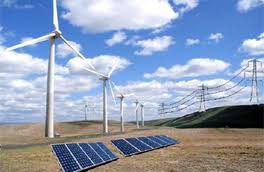Green Energy Corridor delayed by 7-8 months; IPPs fail generation target on PPA issues
 The first phase of the green energy corridor that started with much fanfare has got delayed by around 7-8 months as generation capacities promised by September have failed to come up on issues primarily related to power purchase agreements. R P Sasmal, director operations at Power Grid Corporation said despite the transmission lines being ready, generation capacities have failed to keep pace in line with their promises. “We have to slow down to match the generation capacities being created,” Sasmal said. "Initially the renewable power producers in the solar and the wind energy space had given September and October as commissioning date, but they are now delayed by 7-8 months,” he said. The biggest issue faced by power producers is the Power Purchase Agreement (PPA) which discoms are now renegotiating after the solar and wind tariffs dropped dramatically in the last nine months compared with when these projects were awarded in the Banas kantha-Gujarat, and NP Kunta in Andhra pradhesh, industry experts said. In Andhra Pradesh one 250-MW project has started and the evacuation is going on, but another 750 MW is getting delayed, although the system is ready,” the official quoted above said. Read On ..
The first phase of the green energy corridor that started with much fanfare has got delayed by around 7-8 months as generation capacities promised by September have failed to come up on issues primarily related to power purchase agreements. R P Sasmal, director operations at Power Grid Corporation said despite the transmission lines being ready, generation capacities have failed to keep pace in line with their promises. “We have to slow down to match the generation capacities being created,” Sasmal said. "Initially the renewable power producers in the solar and the wind energy space had given September and October as commissioning date, but they are now delayed by 7-8 months,” he said. The biggest issue faced by power producers is the Power Purchase Agreement (PPA) which discoms are now renegotiating after the solar and wind tariffs dropped dramatically in the last nine months compared with when these projects were awarded in the Banas kantha-Gujarat, and NP Kunta in Andhra pradhesh, industry experts said. In Andhra Pradesh one 250-MW project has started and the evacuation is going on, but another 750 MW is getting delayed, although the system is ready,” the official quoted above said. Read On ..
Under the Inter-state transmission route Power Grid expected to complete around six substations however it has managed to complete only one substation as of now. As per the plan announced later in 2017 Power Grid planned to complete 2-3 substations, two in Rajasthan (Chittor and Ajmer) and one in Tamil Nadu (Tirunevelli). However, now most of them are expected to come after June 2018 or after the Q1FY19 as the company matches its progress based on generation activity. Power Grid plans to complete the first phase of the inter-state Green Energy Transmission Corridor in FY19.
The industry is also faced with issues of mismatch of demand centres and available corridors at present. The Kaythar, substation project in Tamil Nadu in phase-1 failed to take off, as the independent power producers wanted to take power to Gujarat and Maharashtra, while the available corridor was for North East. There is another concern that power producers are not seeking the long-term access with the Central Transmission Utility in advance creating mismanagement of power generated if the system is not strengthened when required.
There are intra-state infrastructure challenges as well as last mile connectivity is not feasible unless states develop their own transmission infrastructure to draw power from the national grid. “That infrastructure has to be developed by the state and we are taking joint venture route to meet this requirement,” the Sasmal said.
The government is building the nationwide green energy corridor under the 12th five-year plan to connect around 55,000 mw wind and solar capacity being generated in eight renewable energy-rich states such as Andhra Pradesh, Gujarat, Himachal Pradesh, Karnataka, Maharashtra, Rajasthan, Madhya Pradesh and Tamil Nadu, that will strengthen both the inter- and intra- state transmission systems, and help in setting up Renewable Energy Management Centres (REMCs) and the control infrastructure.
The first phase of the corridor will evacuate around 33,000 MW through an integrated mechanism out of which PGCIL will set up a 4,000 circuit km of transmission lines of 465 kv. The inter-state portion being handled by Power Grid is close to 10,000 MW while the intra-state portion being handled by eight states is around 12,000 MW. This includes a 7,500 MW transmission project in Laddakh and Kargil. Some 4,500 MW is in various stages of implementation by intra-state agencies.
In the second phase 22,000 MW capacity is being covered which were initially planned to be evacuated from the nine ultra mega solar power projects situated in eight states — Tamil Nadu, Madhya Pradesh, Gujarat, Karnataka, Uttar Pradesh, Andhra Pradesh, Rajasthan and Jammu & Kashmir, however not much progress was made on the UMPPs. By increasing the share of renewable energy generation, the project is expected to significantly help India achieve its target of having 175 GW of installed RE capacities by 2022.
- TradeBriefs Bureau -
Introducing TradeBriefs SME - Print edition - Subscribe Now! | Sample copy